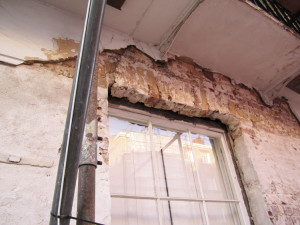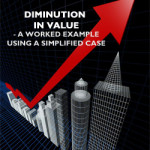 The expiry of a lease presents a landlord with the possibility of an income void lasting many months, which has an even greater impact in a difficult lettings market. It is unsurprising, therefore, that unscrupulous landlords sometimes regard a terminal dilapidations claim as a means of offsetting the leaner times ahead. What can a tenant – faced with a costly and possibly inflated schedule of dilapidations – therefore do to minimise the amount it must pay?
The expiry of a lease presents a landlord with the possibility of an income void lasting many months, which has an even greater impact in a difficult lettings market. It is unsurprising, therefore, that unscrupulous landlords sometimes regard a terminal dilapidations claim as a means of offsetting the leaner times ahead. What can a tenant – faced with a costly and possibly inflated schedule of dilapidations – therefore do to minimise the amount it must pay?
The first question in any dilapidations claim is a factual one: what state were the premises in at the end of the lease? Therefore the very first thing for the tenant to do is get a good building surveyor to produce a detailed survey report on the premises at the expiry date of the lease. It is surprising how often this step is not taken.
The landlord’s Schedule of Dilapidations
What then? Obviously, any defects revealed by the surveyor’s report must be examined to see whether they affect parts of the premises which the tenant has covenanted to keep in repair. For example, does a covenant to repair ‘the building’ include the foundations? The answer to such questions will always depend on the construction of the particular lease. Tenants must therefore be on their guard to spot items in the landlord’s schedule of dilapidations which do not properly belong there.
Many leases exclude the tenant’s liability for ‘ordinary wear and tear’. This is a powerful exclusion in the hands of the tenant, with the potential to knock out many smaller items in a landlord’s claim. Where ‘wear and tear’ is excluded, the landlord’s schedule must therefore be scrutinised carefully, with this in mind.
The standard of repair
Having excluded from the landlord’s schedule items which do not belong there, the next stage is to ask whether the remaining defects cause the premises to fall below the standard required by the tenant’s repairing covenant. Of course, no set of premises has ever been delivered up at the end of a lease in perfect repair. Nor is the law so unrealistic as to impose such a standard on the tenant. Instead, under the usual form of repairing covenant, containing no especially onerous requirements, the applicable standard is:
‘such repair as, having regard to the age, character and locality of the [property] would make it reasonably fit for the occupation of a reasonably minded tenant of the class who would be likely to take it’ (Proudfoot v Hart (1890) 25 QBD 42).
In many cases, the general condition of the premises at the date the lease was granted may be good evidence of the general standard of repair which the tenant must attain under its repairing covenant. After all, the actual tenant (assuming him to be ‘reasonably minded’) took a lease of the premises in that state.
However, this approach must not be pressed too far. For example, where the lease was granted by way of a renewal of an earlier lease, the state of repair acceptable to the sitting tenant may not have been acceptable to a tenant who was free to survey the market for alternatives. Also, a covenant to keep premises in repair first requires the premises to be put in repair. Therefore if, at the date the lease was granted, the premises had, say, a hole in the roof, the tenant would in most cases be obliged to repair the hole even though it was present at the outset. The Proudfoot v Hart approach does not excuse the tenant from having to repair clear, specific defects of this kind.
What is ‘repair’?
If a defect affects a part of the premises within the tenant’s covenant, and if the defect causes the premises to fall below the required standard of repair, it does not follow that the tenant is inevitably obliged to undertake necessary remedial works. The necessary works may simply be too extensive to amount to works of repair at all. Whether or not this is the case is a matter of judgment, or (as is sometimes said) a matter of fact and degree. A court will not require a tenant to give back to the landlord premises which are different in kind from those demised to him at the outset. Therefore works resulting in different premises will not be classed as works of repair which the tenant is required to undertake. The same is likely to be true of remedial works whose cost is out of all proportion to the value of the premises, or their expected life.
Inherent defects
A similar point concerns ‘inherent’ defects. A claim that premises are in disrepair entails the assertion that the premises were in a better condition at some previous time. But that will not be the case where premises suffer from an inherent defect. Where premises suffer from an inherent defect, and – crucially – the defect has caused no consequential disrepair to other parts of the premises, the tenant will not be obliged under its repairing covenant to remedy the problem. If the defect has caused consequential disrepair – eg a defectively installed damp-proof course, which has resulted in consequential damage to plaster surfaces – the tenant may be liable to put right the inherent defect, if that is the only sensible way of addressing the consequential disrepair. But again, the work in question must not be so extensive that it ceases to be work of ‘repair’ at all.
Choice between methods
It is not uncommon to find instances where there are two or more possible methods of effecting a repair. To persist with the ‘hole-in-the-roof’ example, the hole could be repairable either by patching, or by the replacement of the roof in its entirety. A very important principle of the law of dilapidations is that where there is a choice of available methods of repair, the party covenanting to repair – in the present case, the tenant – can choose the cheaper method. However, the tenant may exercise a choice only if the cheaper method actually does the job of bringing the premises up to the required standard of repair. Some patch repairs, for example, will be too short-lived for this purpose. In such cases, the tenant may be obliged to complete the more extensive work – again provided such work is work of ‘repair’ as a matter of fact and degree (above).
Damages
Where the tenant is found to be in breach of covenant at the end of the lease, the landlord’s remedy is in damages.
Under s.18(1) of the Landlord and Tenant Act 1927, damages for breach of a repairing covenant may not exceed the amount (if any) by which the value of the landlord’s reversion in the premises is diminished owing to the breach. Also, no damages at all may be recovered if it is shown that the premises, whether in good or bad repair, would have been pulled down, or subjected to such structural alterations as to make any repairs valueless. These two parts of s.18(1) are usually referred to as ‘s.18 limb 1’ and ‘s.18 limb 2’.
Under s.18 limb 1, the diminution in value of the landlord’s reversion is not the measure of damages, but is a cap which an award of damages may not exceed. For the measure of damages itself, resort must still be had to the common law. Joyner v Weeks [1891] 2 QB 31 establishes that the common law measure of damages includes the reasonable cost to the landlord of effecting the repairs for which the tenant was liable. In cases where there is a choice of repairing methods (above) it follows that the landlord is entitled only to the cost of the cheaper method.
Common law measure of damages
The common law measure of damages is exceptionally unhelpful to tenants. It applies regardless of whether or not the landlord intends to do the repairing works. It applies even where the landlord intends to do more expensive and comprehensive works to the premises, which would have made worthless any repairs which the tenant might have done, had it chosen to comply with its repairing covenant. Sometimes, in the latter case, dilapidations surveyors will say that the works which the tenant should have done have been ‘superseded’ by the landlord’s works. But there is no ‘supersession’ at common law: the tenant remains liable in such cases for the cost of the repairs which it failed to do irrespective of what the landlord does or intends to do thereafter.
At common law, the landlord may also be entitled to damages reflecting lost rental income whilst it carries out remedial works to the premises. Where a landlord intends to do more comprehensive remedial works than those for which the tenant was liable, it is necessary to differentiate between two cases. Where it is shown that the landlord would have undertaken its more comprehensive works even if the tenant had delivered the premises up in good repair, then the landlord’s lost rental income will not have been caused by the tenant’s breaches of covenant. No damages for lost rent will be recoverable, therefore. However, where it is shown that the landlord, receiving the premises back from the tenant in good repair, would simply have re-let them, without doing any further works, the lost rent will have been due to the tenant’s breaches of covenant. Subject to the s.18 cap, damages will be recoverable accordingly.
Section 18: limb 1
The harshness of the common law rule means that in most cases, tenants will have to rely on s.18 limb 1, if they are to ameliorate the amount of their liability to the landlord.
The application of s.18 limb 1 involves two valuations of the landlord’s interest. The first valuation relates to the premises in the actual state in which they were delivered up by the tenant at the termination of the lease. The second valuation values the premises in the hypothetical state in which they ought to have been delivered up. The difference between the two valuations is the s.18 ‘cap’.
Both of the two valuations under s.18 limb 1 are predicated on a hypothetical open market sale of the landlord’s interest. The valuation date in both cases is the term date of the lease. The only difference between two valuations is the assumed state of repair of the premises. It is common for valuation surveyors in s.18 cases to rely on the so-called ‘residual’ method of valuation. Resort to this method is had where the valuer concludes that the hypothetical purchaser would acquire the premises with a view to spending money on their amelioration, improvement or development. The residual method takes the value of the premises as a finished product (often their rental value, capitalized using an appropriate yield rate), and deducts the costs of getting the premises to that state (including an element of return on the developer’s costs). What is left is the value of the premises – hence, the residual value. Anyone seeking an example of the use of residual valuations under s.18 will find one in Sunlife Europe Properties Ltd v Tiger Aspect Holdings Ltd [2011] 1 EGLR 30.
Section 18: limb 2
Under s.18 limb 2, the exercise is very different. There is no hypothesis of a sale of the landlord’s interest on the open market. Instead, s.18 limb 2 applies where as a matter of fact the premises are going to be pulled down, or be subjected to structural alterations making repairs valueless and as a matter of evidence that would have been the case even if the premises had been delivered up by the tenant in good repair. Cases where limb 2 have been successfully invoked are comparatively rare. However, under limb 1 it is common to find cases where tenants have contended that the value of the premises, both in and out of repair, is their redevelopment value. In such cases, a developer may not be too concerned about the state of repair of the premises, and may bid the same, or close to the same, amount for the premises on each of the two hypothetical bases.
Practice and procedure in dilapidations claims
Among the more significant elements of a dilapidations claim are the legal and surveying costs involved in dealing with it (to say nothing of management time). Landlords should by now be aware of, and should follow, the RICS pre-action protocol on dilapidations claims. The protocol embodies a ‘cards-on-the-table’ approach, embracing all aspects of the claim, and is designed to promote settlement of dilapidations claims, without the great expense of court proceedings. If notwithstanding the protocol, a claim is issued, a tenant should always consider making a Part 36 offer of settlement, at an early stage. Such offers are not seen by the trial judge until after he or she has made a ruling on the claim. Where the landlord succeeds in recovering less than the amount offered by the tenant under Part 36, the landlord will be unable to recover its costs of the claim after the date of the Part 36 payment – even though its claim has succeeded to some extent. On the contrary, the tenant will usually be able to obtain payment of its own costs from the landlord. Therefore Part 36 is a very powerful tool indeed, if deployed with care. Time spent deciding the amount of a Part 36 offer is therefore hardly ever time wasted.
This article was first published in the In-House Lawyer
ANTHONY TANNEY
FALCON CHAMBERS





This article demonstrates the importance in appointing an experienced dilapidations team. The building surveyor, the valuer, and legal team.